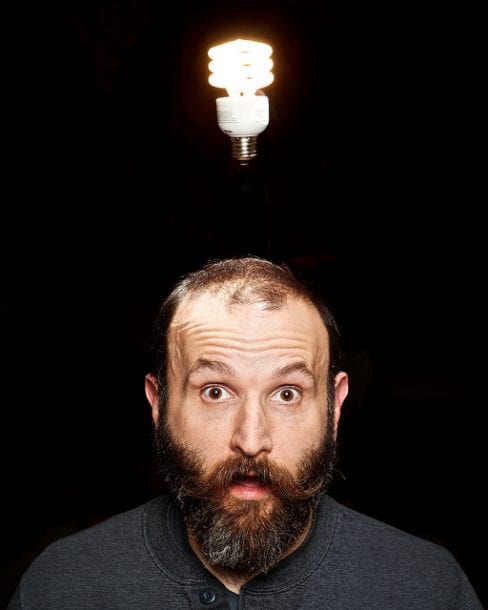It happened while driving over the Savannah River Bridge between Aiken, SC and Augusta, GA. Our one-year old son was seated in the backseat looking out of the car window. Without warning he pointed at the river and said, “water!” He had been mimicking words…dada, mama, bye bye…for quite a while. But, this was the moment he totally “got” the concept of language. Almost, immediately he began pointing at other objects and calling out their names. Parents cherish their child’s first word; we cherished our son’s sudden insight into language.
Innovation works a lot like my son’s “getting” the mechanics of language. Things are going a long like normal and without warning there is a sudden left turn in our mind. That turn (call it insight or aha or even learning) so thrilled Don Perignon, the discovery of champagne, that he excitedly told all his buddies to come over quick; he was tasting the stars. Archimedes ran out in streets of Syracuse, Greece naked, hollering “Eureka” (I have found it!) when he stepped into his bath, noticed the displacement of water exactly matching his foot, and unexpectedly “got” a concept that would be important in assessing gold. But what does it take to nurture such insights that lead to ingenious applications?
Innovation is more likely to happen when there is a clear purpose, noble cause or captivating problem to be solved. Granted there is the accidental genius that makes a discovery while calmly eating an apple. But, embracing a challenge enhances the acceleration of insight. It means it is important leaders help associates connect with the drama of the challenge. It is the compelling nature of purpose or mission that moves people to see it in new ways. When we hear the phrase, “necessity is the mother of invention,” it reminds us of the draws of cause.
Innovation more often occurs in a safe, supportive environment. Of course we have all heard stories of the ruthless, driven Steven Jobs and his intimidating drive for perfection as CEO of Apple. But, when people feel free of judgment they can more easily be playful with ideas and comfortable with experimentation. The head of R&D at Polaroid told the team working on a revolutionary camera that would hand you the taken picture, that a major competitor was very close to a similar breakthrough. He continued: “But we have the best R&D team in the industry.” Legend has it that the team, inspired by his affirming words, made the technological breakthrough within twenty-four hours and beat their competition to the marketplace.
Innovation happens in a culture that values experimentation and communicates a large tolerance for risks. Business evangelist Tom Peters challenged audiences to invite super creative people to staff meetings—a sculptor, thespian, and painter, even a clown. What changes in the setting when it is “bring your pet or child to work” day? What happens when customers tour the facility? When Medtronic R&D teams are stumped on the development of a new medical device, they invite patients who have benefited from other Medtronic medical devices to come and tell their stories. Many things can serve as a catalyst for innovation; but all share one feature in common: they foster risky experiments.
Now, back to my son. That red-letter day driving over the river started a gift for gab that frequently got him put in the corner in elementary school, forced to watch the clock and not everything else going on in the classroom. It also enabled him to become one of the top industrial real estate pros in a very large metropolitan city. But, his claim to fame and the key to his success is not his verbal prowess. It is his capacity to “see” innovative applications and opportunities his competitors cannot fathom.
Photo Credit: Flickr via Dennis Wilkinson
